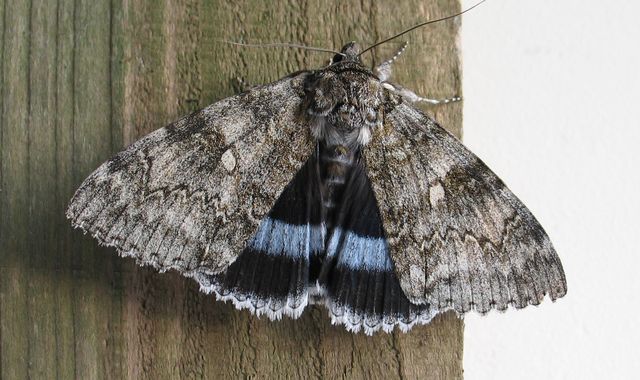Moth that was ‘extinct’ for 50 years is back and breeding
Written by News on 26/09/2019
A moth widely believed to have been extinct in the UK for the last 50 years is back and breeding, according to conservationists.


The Clifden nonpareil, whose name means “beyond compare”, is one of the largest and most spectacular moths native to the UK but was believed to have become extinct in the 1960s.
The moth has a wingspan that can reach almost 12cm and a bright blue stripe across its black hind wings, which gives rise to an alternative name of the blue underwing.
Conservationists said it has long been regarded as a holy grail among moth enthusiasts and there have been numerous sightings across the south of England and Wales this year.
Richard Fox, from the charity Butterfly Conservation, said: “The Clifden nonpareil is a fantastic addition to our wildlife and it is great to know that it is resident again in the UK, after an absence of 40 years or so.
“Its caterpillars feed unnoticed up in the canopies of aspen and poplar trees, so the adult moths are the best indication of how widely established this species now is.
“This year, the Clifden nonpareil is turning up all over southern Britain, in the Midlands, East Anglia and Wales, in Ceredigion and Monmouthshire, as well as in south coast counties.
“There’s never been a better chance of a thrilling encounter with this impressive insect.”
People are being asked to record sightings of the Clifden nonpareil and other moths as part of the annual Moth Night, which runs from September 26 to 28.
Mark Tunmore, founder of Moth Night, said: “September is a special time for studying moths in the British Isles, with a colourful range of resident species mixing with more exotic species from Europe or even North Africa as warm air currents sweep them northwards.
“Already this year, we have received reports to our migrant insect news service, Flight Arrivals, of Clifden nonpareil sightings from Cornwall, Devon, Sussex, Warwickshire, Suffolk, Dorset, Kent, Norfolk, Somerset and Northamptonshire.
“Some of these are likely to be immigrants and some part of the recently established resident populations.
“When we started Moth Night 20 years ago, this moth was a very rare immigrant but it is now becoming familiar to moth enthusiasts across southern Britain.
“This illustrates just how quickly change can take place and that’s why moths are such a fascinating group of insects to study.
“Coming at the peak of the Clifden nonpareil season, Moth Night 2019 is a fantastic opportunity to map the current range of this species in Britain.”
(c) Sky News 2019: Moth that was ‘extinct’ for 50 years is back and breeding






